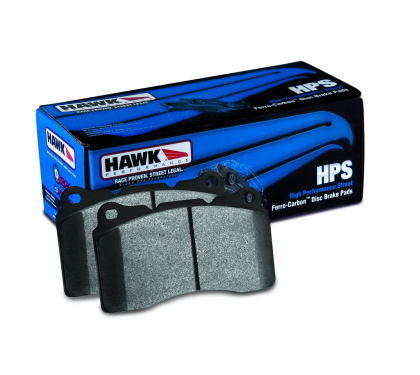Performance Braking Systems
Brake technology has improved tremendously over the years, especially compared to the Fox body braking systems that have their roots in the 1970s. The sub-11 inch discs, single piston calipers and small drum brakes were barely acceptable when the car was in production, and they're wholly inadequate on modern builds that push power well beyond stock levels. SN95 and later Mustangs have four-wheel disc brakes, but there's still plenty of room for improvement between stronger calipers, better rotors and more effective pads. How do these parts work together, and which upgrades will give you the best results?

Pads
Pad formulations are designed to balance friction, noise, wear, operating
temperatures, dust and price. Standard pads focus mainly on price and noise,
while racing pads focus on maximum friction at high temperatures. This makes
them unsafe to use on the street and at drag strips where the brakes won't be
hot enough to work effectively. Performance pads are in between these extremes,
providing superior performance in a wide range of situations. We carry
Hawk
performance pads
that work great both hot and cold, while keeping noise
down. This makes them a great choice for track days while still performing well
on the street and at the drag strip.
Blank and Slotted Rotors
When you start getting into performance rotors, the first thing that comes up
is off-gassing. Pad material is made up of particles held together by an epoxy.
Under extreme conditions, the pads can get so hot that the epoxy vaporizes,
creating a layer of gas on the pad surface. This cushion prevents pad to rotor
contact, reducing braking force. However, newer brake formulations, and
performance formulations in particular, use glues that stay solid at high
temperatures.
While blank rotors may all look about the same, a major difference can be made
in the details.
Stop
Tech rotors
are precision machined to reduce runout and improve balance,
and the coating on the hat keeps it from rusting on the hub. Center split cast
vanes provide even contact between the rotor faces for better heat dissipation.
The end result is a rotor with maximum pad contact that can manage heat in
racing conditions.
Slotted rotors increase airflow for better cooling, create a brief gap between
the pad and rotor to let gases escape, and help reduce weight. However,
removing rotor material means there's less thermal mass to absorb heat and less
contact area with the rotor, reducing performance.
Manufacturers choose which rotor will be used based on application. Ford Racing
brakes are aimed at track use, so they use solid rotors for maximum contact.
Strange
Engineering
uses slotted rotors for their drag-focused brakes to save
weight and reduce gas and heat issues during the brief, hard stops needed to
slow down at the end of the track.
One Piece vs. Two Piece Rotors
Most rotors are one piece, using a single steel casting to form the hat and
disc. Two piece rotors have a steel disc that bolts to an aluminum hat. This
reduces weight, increases cooling around the hub to protect the wheel bearings,
and lets the disc expand evenly without making the hat bind. This is generally
overkill on street builds, but it can do a lot to keep the brakes performing
under extreme conditions when racing. Ford Racing packages their SVT brake
upgrade kit with both types of rotors, letting you choose the setup that works
best for your application and budget.
Calipers
Unlike other components, caliper performance boils down to one thing: the more
surface area the pistons cover, the more force they can exert on the pads,
increasing braking performance. That means adding more pistons and making them
bigger increases stopping force.
Manual vs. Power Brakes
Why do so many drag racers eliminate the brake booster? Weight is a good reason
by itself, but it's mostly due to decreased vacuum pressure at idle caused by
high flow intake components. If the engine is pulling less than 16 inches of
vacuum at idle, it's going to have trouble supplying the booster.
Get the Brakes Your Mustang Deserves
No matter which direction you're going with your Mustang build, you can get the
brake parts you need at
www.AndersonFordMotorsport.com.
We've been helping customers with their project cars for over 30 years, so we
know what works.
Recent Posts
-
Bringing the Fox Body Mustang into the 21st Century with Holley Terminator X
Anderson Ford Motorsport has been in the Fox Mustang performance industry since 1989. One of the bi …22nd Oct 2021 -
Roush Supercharger install on a 2019 Ford Mustang
Check out this 2019 Ford Mustang before and after we installed a Roush Supercharger. …21st Feb 2020 -
All Blower Installations are not Equal.
Why Should You Choose a Company to Install Your Blower That Has a Dyno Facility In-House?Are all de …24th Jan 2020

